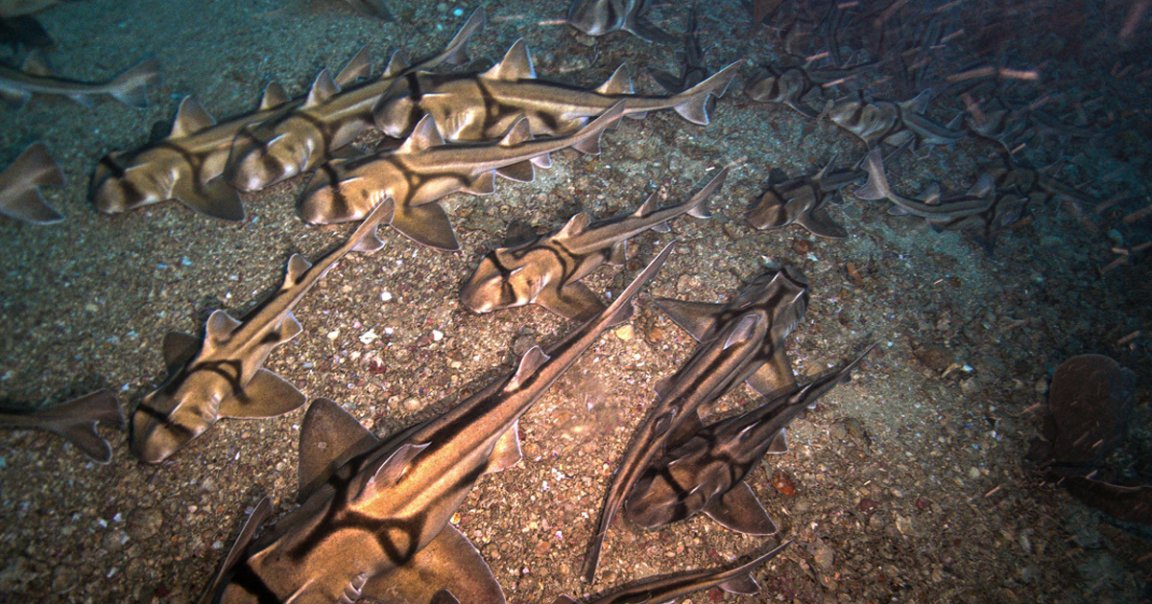
Second Spotting
A huge school of bizarre-looking sharks in Australia has been caught on video sleeping on the ocean floor in a “carpet” formation — and it’s not the first time researchers have caught them there, either.
Named Port Jackson sharks after the part of Australia where they were first discovered, thousands of these blunt ridge-nosed predators were found, according to a press release from the University of Tasmania, blanketing the floor of a marine park as they slumbered.
“There were thousands of sharks,” explained UTAS researcher Jacquomo Monk, “tightly packed like a carpet spread across the seafloor.”
According to the statement, this incredible footage was captured by a camera-equipped autonomous aquatic robot operated remotely from a government research ship floating above.
Incredibly, scientists from the University of Tasmania’s Institute for Marine and Antarctic Studies said they spotted the sharks schooling in this peculiar manner in almost the exact same area they’d seen them do it before, six years prior.
While it’s clearly an amazing thing to witness, Monk noted that marine scientists don’t really know why sharks tend to “aggregate” this way — and that’s not the only unknown in this situation, either.

In Aggregate
Known as an “aggregation site,” these shark schooling cluster spots are fairly commonly observed in the world of marine research, despite no one knowing exactly why marine life tends to do it.
While the Port Jackson sharks had been seen in that same spot before, the team realized this time around that “the Beagle gathering appears to be only for females,” as Monk said. This makes a certain amount of sense given that this species tends to segregate by sex except when mating, but there are still more questions than answers.
“We don’t know exactly why the females are here,” Monk said in the press release. “Perhaps they are feasting on the local delicacy — doughboy scallops — before the long trip north to lay their eggs.”
While scientists will need to do plenty more research to get to the bottom of this phenomenon, there is one thing that seems pretty certain: “seeing them again does tell us that the area is important to them,” Monk concluded.
More on sharks: Leg Washes Ashore After Shark Attack, Surgeons Hope to Reattach